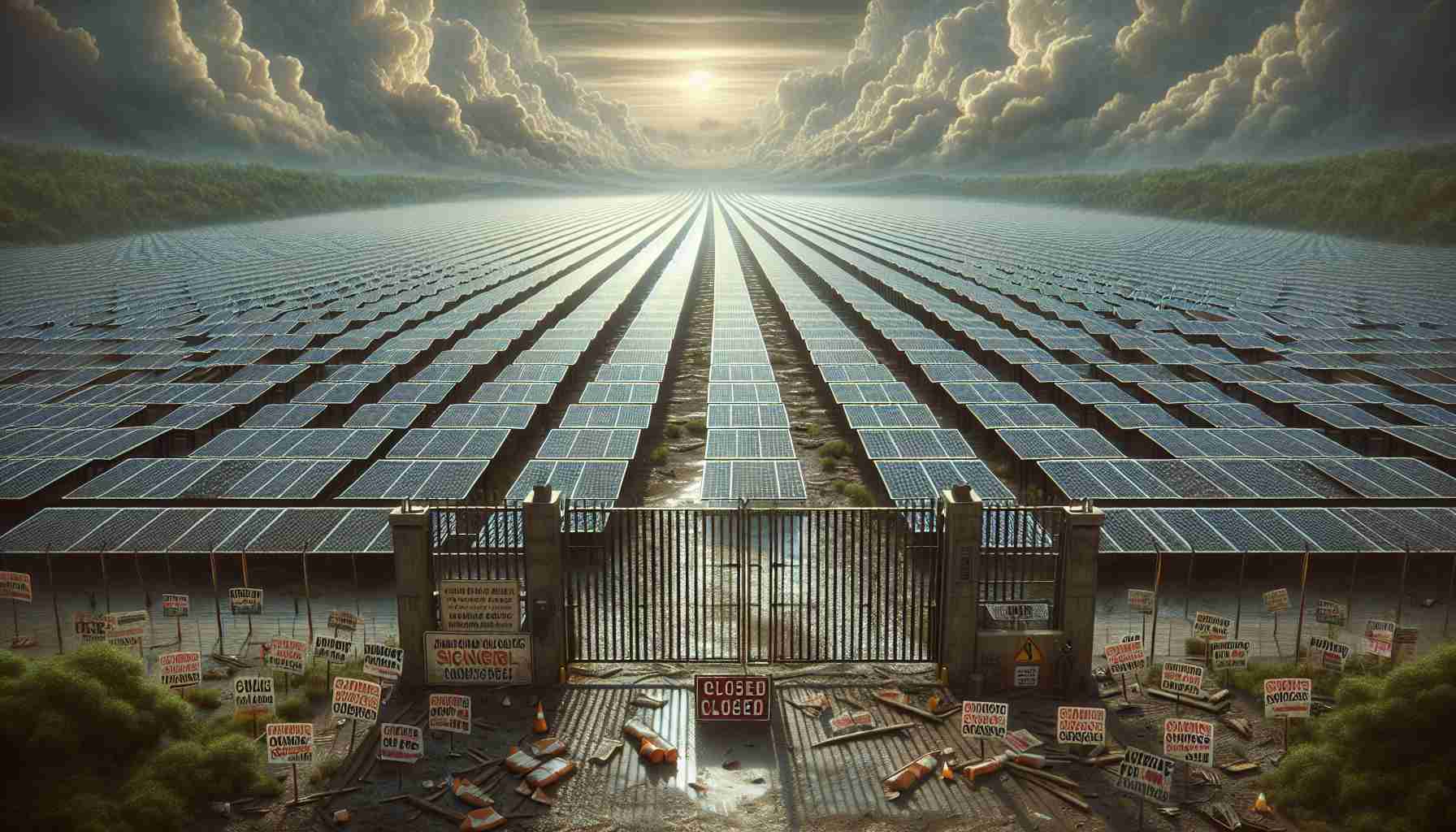
Sunderland Votes Against Controversial Solar Project
Plans for a substantial solar energy project in the green belt area near Springwell village were firmly rejected by Sunderland City Council. The proposed solar farm, intended for Usworth House Farm, aimed to install over 59,000 solar PV panels, generating enough renewable energy to power more than 11,000 homes annually for 40 years. However, the project faced overwhelming opposition from the community, with over 400 objections filed.
The council’s planning meeting highlighted numerous concerns including fears of significant noise pollution, potential harm to local heritage sites, and detrimental effects on agricultural land. While the council’s planners initially backed the project, local councillors unanimously voted against it, causing supporters of the rejection to applaud in relief.
The applicant, Boom Power Ltd, recognized the “sensitivity” of the location and conceded that many of the objections raised were valid. They argued that the solar farm would not result in the permanent loss of farmland, stating that it represented a beneficial use of land.
Despite the rejection, some councillors acknowledged the importance of transitioning to renewable energy sources to combat climate change. One councillor emphasized the urgency of developing solar and wind energy, labeling it essential for the survival of humanity. Nonetheless, the local sentiment favored protecting the green belt, leading to the final decision against the solar farm development.
Renewable Energy vs. Green Belt Protection: A Deep Dive into Sunderland’s Solar Project Rejection
Overview of the Sunderland Solar Project
The recent decision by Sunderland City Council to reject the proposed solar energy project at Usworth House Farm has sparked discussions around the balance between renewable energy development and protecting green belt land. The plan aimed to install over 59,000 solar photovoltaic (PV) panels, which would have generated enough energy to power more than 11,000 homes for four decades. However, the project was met with significant community pushback.
Key Concerns Raised by the Community
1. Noise Pollution: Residents expressed worries about potential noise from the operation of the solar farm, which could impact the tranquility of the rural area.
2. Impact on Heritage Sites: The proximity of the proposed solar farm to local heritage sites raised alarms about preserving historical integrity and community identity.
3. Agricultural Land Use: Many community members were concerned about the potential loss of agricultural land, which they felt was essential to food security and local culture.
Planning Council Insights
The planning committee initially showed support for the solar initiative acknowledgment of its potential environmental benefits. However, local councillors ultimately voted unanimously against it, reflecting the strong sentiment within the community regarding the importance of safeguarding green belt areas.
Boom Power Ltd’s Stance
The applicant, Boom Power Ltd, acknowledged the sensitivity surrounding the chosen location. They maintained that the solar farm would not lead to the permanent loss of farmland and argued that such renewable energy projects are crucial in the fight against climate change.
Pros and Cons of Solar Farms in Green Belt Areas
Pros:
– Renewable Energy Generation: Solar farms can significantly contribute to local and national energy needs in a sustainable manner.
– Potential for Land Rehabilitation: Well-planned solar installations can coexist with agricultural practices and even improve land conditions over time.
Cons:
– Loss of Green Belt: Development can erode green spaces that provide ecological benefits and recreational opportunities.
– Community Discontent: Local opposition can arise if the projects are perceived to threaten community values or livelihoods.
Insights on Renewable Energy Trends
Despite the rejection, there is a growing recognition of the need for renewable projects. The rise of discussions about climate urgency emphasizes a shifting landscape where local governments might face pressure to balance renewable energy goals with community concerns.
Market Analysis
The rejection of the Sunderland solar project reflects a broader trend where renewable energy initiatives face increasing scrutiny concerning local ecosystem and land use. However, as the urgency for clean energy increases, integrating community feedback into the planning stages will be critical for future projects.
Future Predictions
As climate change challenges intensify, there will likely be more debates on land use and renewable energy. Local governments may need to innovate solutions, such as finding sites that minimize impact on green spaces while maximizing renewable contributions.
Conclusion
The Sunderland City Council’s decision illustrates the complexities involved in energy transition debates. As communities strive to protect local values while addressing environmental concerns, finding common ground will be essential for the future of renewable energy projects in green belt areas.
For more insights on sustainable energy developments, visit our main site.



